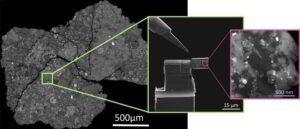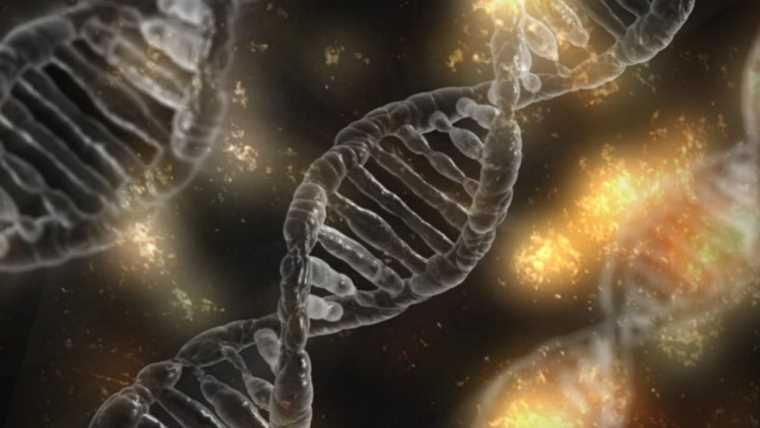German researchers using a cutting-edge, chemical-free detection method have confirmed the presence of organic compounds in the Winchcombe Meteorite, including nitrogen and amino acids. The new findings confirm similar results from a previous analysis of the well-known space rock, although this is the first time such a detection was made without chemical treatments.
“The team of researchers are now the first to demonstrate, to a high degree of precision, the existence of some important nitrogen compounds in this meteorite with amino acids and heterocyclic hydrocarbons – without applying any chemical treatment, and by using a new type of detector design,” a press release announcing the findings explains.
Witnesses Spotted Winchcombe Meteorite Falling over England in 2021
The Winchcombe meteorite gained some level of media attention after it was witnessed by a network of cameras falling from the sky over Winchcombe, England, in February 2021. This allowed researchers to locate it within days, offering those who study space rocks one of the most pristine specimens ever collected.
“Normally, meteorites are tracked down in the cold and hot deserts on Earth, where the dry climate means that they don’t weather very fast, but they do change as a result of humidity,” explained Dr. Christian Vollmer from the Institute of Mineralogy at Münster University. “If a meteorite fall is observed soon after the event and the meteorite is quickly collected, as was the case in Winchcombe, they are important ‘witnesses’ for us regarding the birth of our solar system – which makes them especially interesting for research purposes.”


(CREDIT: SuperSTEM Laboratory, Daresbury, UK).
Studying meteorites, chunks of material dating back to the birth of our solar system can offer researchers a unique window into our past. This includes revealing potential clues to the origin of life on Earth, something that remains a mystery, and clues to possible life outside of Earth.
In the case of the Winchcombe meteorite, initial research found water inside. Researchers also spotted signs of amino acids and other organic compounds locked deep within its interior. Organic compounds form the building blocks of life, including proteins and amino acids that make up the DNA of all living things.
This means that finding these compounds on a meteorite that has been in space since the beginning of the solar system without coming into direct contact with Earth can offer unique clues that life on Earth may have been seeded, at least chemically, over 4 billion years ago. It also hints at the possibility that there may be life in other parts of our solar system as well.
Still, the original process used to sniff out the organic compounds within the Winchcombe meteorite involved chemical treatments to enrich the low concentrations of those compounds for analytical purposes, potentially affecting the precision of the results. This new method removes any chemical treatments or enrichments, increasing confidence that the building blocks of life inside this meteorite are indeed from the solar system’s formation.
High-Resolution Electron Microscope Detects Organic Compounds Without Chemicals
As detailed in the journal Nature Communications, the breakthrough was made because the researchers have access to a high-resolution electron microscope. Housed at the SuperSTEM laboratory in Daresbury, England, this “super-microscope” can simultaneously depict high carbon compounds at the atomic level and analyze their chemical structure using a specialized detector. Both methods confirmed the presence of organic compounds within the Winchcombe meteorite.
“Demonstrating the existence of these biologically relevant organic compounds in an untreated meteorite is a significant achievement for research,” says Vollmer. “It shows that these building blocks of life can be characterized in these cosmic sediments even without chemical extraction.”
Of course, these findings do not solve the mystery of life on Earth or the potential for life on other planets. However, the researchers behind the study say this modern technique may also prove valuable for those studying organic specimens brought back to Earth from space missions “such as the dust particles from asteroids recently brought back by the Japanese Space Agency (Hayabusa2) and NASA (OSIRIS-REx).”
Christopher Plain is a Science Fiction and Fantasy novelist and Head Science Writer at The Debrief. Follow and connect with him on X, learn about his books at plainfiction.com, or email him directly at christopher@thedebrief.org.

